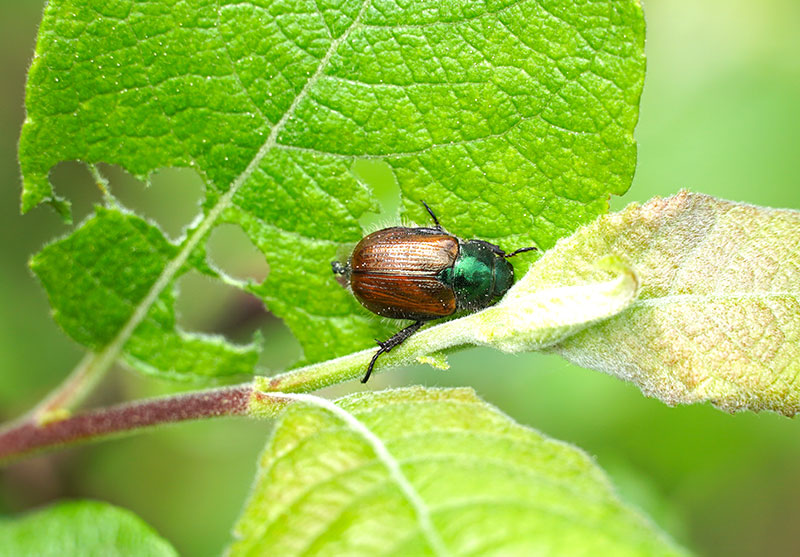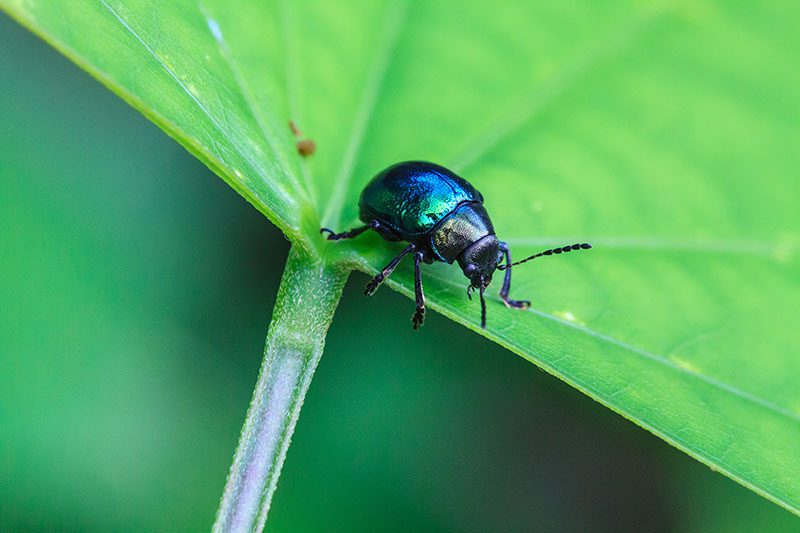Top blog articles
Surely you have heard in your house, during the night, a particular buzzing sound that is not from a bee or wasp. These are the june bugs, and they are aptly named after the month of June because they are seasonal. These insects are quiet and do no harm, don’t lose your cool, they tend to be clumsy. Here we show you how to get rid of june bugs.
What are june bugs?

June bugs, sometimes known as May beetles or June beetles, are members of the Phyllophaga genus. They are a type of scarab beetle that is common in late spring and summer. June bugs have a strong body structure and are often brown or reddish-brown in hue. These insects are attracted to light and are frequently observed at outdoor lighting sources or stumbling around porch lights.
What makes June bugs bad?
Although harmless to people, it is a pest in its immature larval stage, causing damage to grassroots and other plants. In addition to P. longispina, other common beetles produce white larvae, such as Japanese beetles (Popillia japonica). All of these beetles can be handled in much the same way.
Signs of June bugs causing damage in the garden
You notice large beetles in the evenings, this is their adult stage, so they are either going or coming from laying their eggs in the garden lawn.
- Brown spots appear on the lawn. This is a sign that the grubs are killing the grassroots. You may even find that the roots are already detached and you can pull them up by hand.
- You have holes, like burrows, in your lawn. These holes are usually made by raccoons or other carnivorous animals looking for larvae to eat. In some regions, armadillos are big eaters of grubs, demonstrating natural predation.
- You have pitted or jagged plant leaves on the surface. Adult June bugs feed on the leaves, contributing to plant damage.
- Small holes in walls, windows, or doors may indicate entry points for June bugs into your home.
What smells repel june Bugs?
Several natural smells have been shown to effectively get rid of June bugs. To repel these pests, consider integrating the following odors into your environment:
- May bugs loathe the smell of cedar. To prevent their presence, use cedar mulch in your garden or place cedar chips near entry points.
- Bay leaves: Arrange Bay leaves around the outside of your house or garden. June bugs may be repelled by the pungent perfume.
- Lemon and eucalyptus: The aroma of lemon and eucalyptus repels June bugs. To create a bug-free environment, use essential oils or candles scented with these scents.
What is the best thing for bugs?

When it comes to dealing with June bugs, prevention is everything. The following are some effective strategies for controlling and eliminating June bug populations:
- Manual removal. Pick June bugs off plants and dispose of them in soapy water during the nighttime hours, when they are most active.
- Physical barriers. To shield sensitive plants from adult June bugs, use netting or row coverings.
- Garden hygiene. Remove any rotting organic materials from your garden, such as fallen fruits or leaves, as they attract June bugs.
- Nematodes. Beneficial nematodes can be put in the soil to suppress June bug larvae. The larvae are preyed upon by these minute organisms, which reduces their population.
- Milky spores. Applying milky spores to your lawn is an effective method for controlling June beetle larvae, preventing a full June bug infestation.
- June bug traps. Setting up a June bug trap with light sources can help capture and reduce their numbers.
Are june bugs aggressive?
June bugs, thankfully, are not hostile toward humans. They are largely an annoyance because of their proclivity to fly into lights and glass. While their ungainly flight may frighten you, they do neither bite or sting. June bugs are more concerned with finding mates and food than with interacting with humans.
Getting rid of june bugs can be difficult, but with the correct knowledge and methods, you can protect your plants and home. You can reduce the impact of these pests by taking preventive actions, using natural repellents, and using focused management approaches. While June bugs might be annoying, they are generally harmless to people. Continue to be proactive and enjoy your summer without interference from these tenacious bugs.
Bottom line
Getting rid of June bugs can be difficult, but with the correct knowledge and methods, you can protect your plants and home. You can reduce the impact of these pests by taking preventive actions, using natural repellents, and employing targeted pest control strategies. June bugs and their larvae, particularly the white grubs, can cause damage to lawns and gardens if left unchecked. By understanding their life cycle and using natural predation methods like nematodes and milky spores, you can prevent a severe June bug infestation. Whether it’s using a June bug trap, sealing small holes, or addressing what attracts June bugs, a proactive approach will help you enjoy your home and garden without these seasonal pests. With the right techniques, you can effectively learn how to get rid of June bugs and maintain a bug-free environment throughout spring and summer.










Your opinion matters, leave a comment